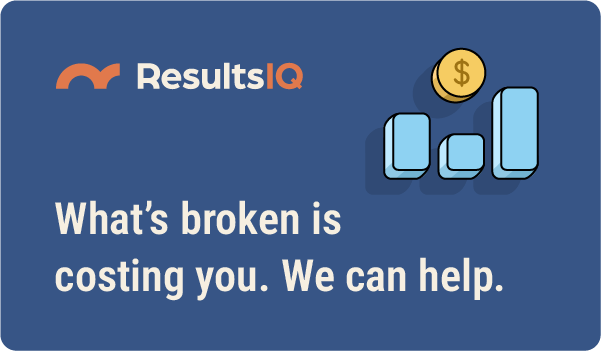The Hidden Cost of a Messy HubSpot Portal
Your marketing team is thriving, your sales team is hustling, but you still aren’t getting the results you want. You might have been overlooking the...

While there are many marketing applications for artificial intelligence (AI) the most common is undoubtedly the chatbot. We’ve all encountered them. It’s hard to visit a large IT vendor’s web page without one popping up, ready to help. But these tools don’t have to be relegated to deep-pocketed, multi-billion dollar giants. They’re now within reach of small and midsized organizations as well, and they can play a strong supporting role in lead generation.
But first, we need to explain what a chatbot is. At its most basic, a chatbot is an algorithm that interacts with a human being through text or voice and then completes tasks based on that conversation. It doesn’t necessarily have to be powered by AI — you can use commercial platforms to create canned responses to specific questions — but it’s tough to achieve sophisticated functionality and a human-sounding conversation without it.
Customers are somewhat wary of chatbots. According to a survey issued in June from Userlike, 80% of consumers have interacted with a chatbot. And while only 40% prefer chatbots to waiting to speak with a human being — so long as they get them what they need quickly — more than half said they’d be willing to interact with a chatbot first in order to be transferred.
We’re probably most accustomed to seeing chatbots pop up on web pages, but they also integrate with messaging apps like WhatsApp or Facebook Messenger. Today, these messaging apps connect to hundreds of thousands of chatbots with which customers and prospects can interact, and they can do everything from answer questions about products to placing an order.
And chatbots aren’t limited to text. Voice chatbots such as Apple’s Siri, Amazon’s Alexa and Google Assistant demonstrate just how sophisticated chatbots can be when integrated with voice recognition and natural language processing (NLP) technologies.
Before you start down the path of implementing a chatbot for your organization, here are a few tips to keep in mind. First, you need to have a clear understanding of what you want it to do. Chatbots are still an emerging technology, so they provide a better experience when the scope of tasks they are expected to perform is focused.
Also, be kind to your customers and prospects: make sure they know they are interacting with a bot. It’s very frustrating to believe you are speaking with a human being only to have the interaction suddenly fail the Turing test in a big way. It feels like a betrayal, and you REALLY don’t want prospects feeling that way about your brand. And have a backup ready, whether that’s a form or a live person. Not everyone wants to interact with a bot, no matter how sophisticated it might be.
Finally, don’t make your bot intrusive, especially if you’re leveraging a messaging app. Customers might get annoyed by too many emails, but we’ve all developed a certain tolerance for marketing spam. Messaging apps are much more personal. If your chatbot constantly pings customers, it comes across as extremely invasive, and they’ll unsubscribe quickly.
Enterprise tech marketers are always looking for leads, and chatbots can help. They can, for instance, serve as a friendlier face for online registration forms, collecting contact information that will later be handed over to sales. These chatbots probably don’t need heavy AI, as the task is straightforward and simple. Template-driven chatbot platforms will likely work just fine.
If you want to go an extra step, the chatbot can also help qualify leads with just a few more questions programmed into it. All of this data can be fed into analytics to generate additional insights about prospects and customers.
Let’s say the chatbot identifies the individual as a qualified lead. You can use a chatbot to go to the next step. If the context is one in which it would be appropriate to ask, the lead generation and qualification chatbot could inquire whether the individual would like to see a quote.
Alternatively, the quote generation chatbot could stand alone on its own landing page or integrated into a messaging app. Either way, having a round-the-clock quote generation chatbot available to customers can help ensure you never miss a good opportunity. Plus, a chatbot can provide a superior experience to a form, because it can provide the potential customer with additional information based on replies, especially if it’s powered by AI and / or NLP.
Once you’ve got a lead, if they’re willing to opt-in, you can nurture the lead with a chatbot integrated into a messaging app. The chatbot can periodically check in with prospects to provide content selected specifically for their interests, alert them to relevant events and engage them in conversations about their current needs. Even better, if the prospect seems ready to buy, the chatbot can immediately turn the prospect over to a sales rep or a quote generation chatbot.
Chatbots can play a key role in your lead generation strategy, so long as you follow a few simple guidelines to avoid creating annoying situations or unpleasant surprises for your prospects and customers.
Want to chat with us about how your business could benefit from chatbots? Get in touch!

Your marketing team is thriving, your sales team is hustling, but you still aren’t getting the results you want. You might have been overlooking the...

INBOUND 2024 lived up to every bit of its excitement and energy! As always, it was a fantastic opportunity to connect with other like-minded...

It wasn’t that long ago that some in marketing circles were wondering whether the webinar was dying out. But the rumors of its demise have been...